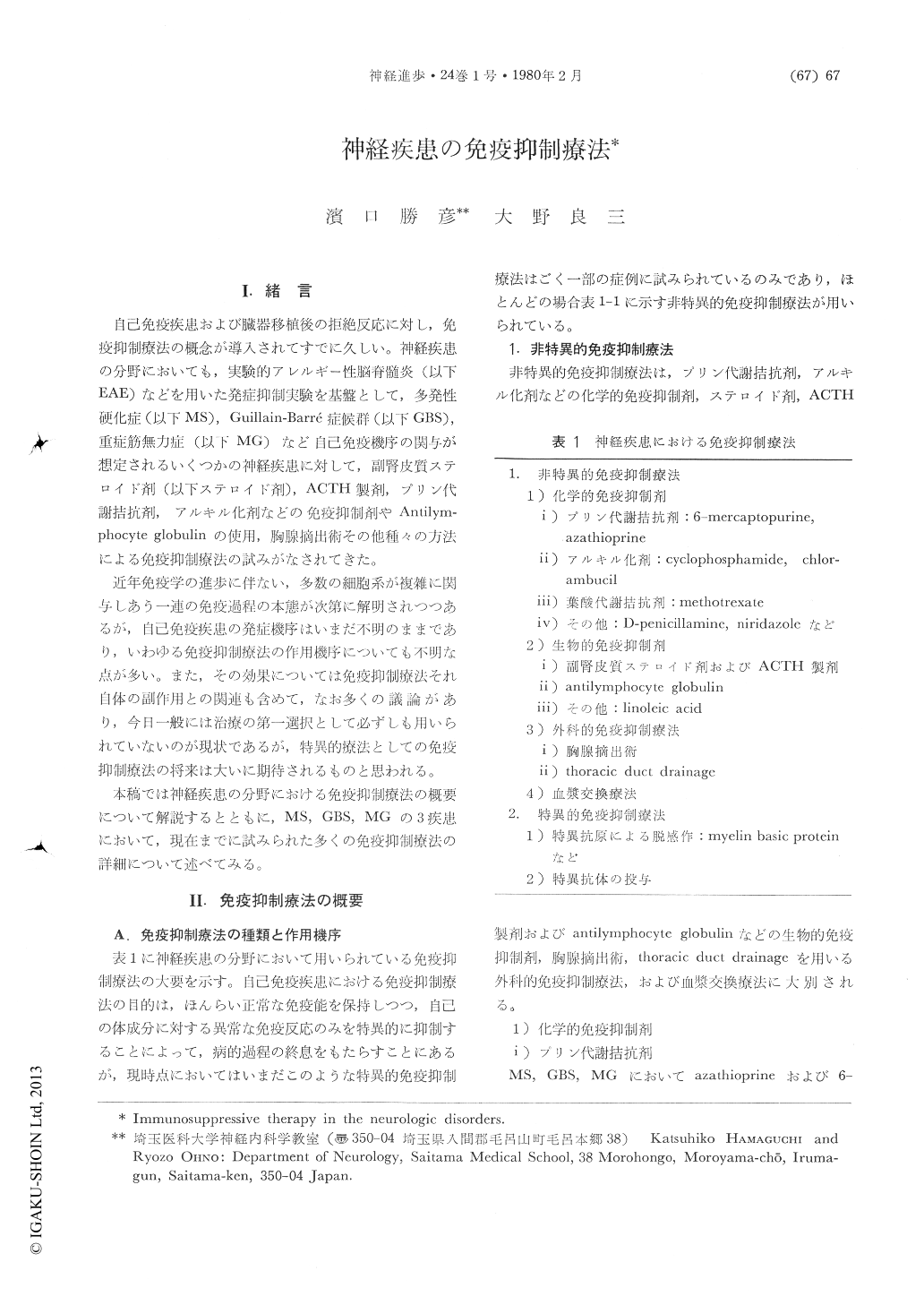Japanese
English
- 有料閲覧
- Abstract 文献概要
- 1ページ目 Look Inside
I.緒言
自己免疫疾患および臓器移植後の拒絶反応に対し,免疫抑制療法の概念が導入されてすでに久しい。神経疾患の分野においても,実験的アレルギー性脳脊髄炎(以下EAE)などを用いた発症抑制実験を基盤として,多発性硬化症(以下MS),Guillain-Barré症候群(以下GBS),重症筋無力症(以下MG)など自己免疫機序の関与が想定されるいくつかの神経疾患に対して,副腎皮質ステロイド剤(以下ステロイド剤),ACTH製剤,プリン代謝拮抗剤,アルキル化剤などの免疫抑制剤やAntilymphocyte globulinの使用,胸腺摘出術その他種々の方法による免疫抑制療法の試みがなされてきた。
近年免疫学の進歩に伴ない,多数の細胞系が複雑に関与しあう一連の免疫過程の本態が次第に解明されつつあるが,自己免疫疾患の発症機序はいまだ不明のままであり,いわゆる免疫抑制療法の作用機序についても不明な点が多い。また,その効果については免疫抑制療法それ自体の副作用との関連も含めて,なお多くの議論があり,今日一般には治療の第一選択として必ずしも用いられていないのが現状であるが,特異的療法としての免疫抑制療法の将来は大いに期待されるものと思われる。
The authors reviewed the general concepts of the immunosuppressive therapy, the classification, the mechanism of action, the clinical use and its adverse effects, and the recent advances in the immunosuppressive therapy for the neurological diseases such as multiple sclerosis, Guillain-Barré syndrome and its related polyneuropathies, and myasthenia gravis, in which the autoimmune mechanism is assumed to be the pathogenesis.
In multiple sclerosis, the use of the adrenocortical steroids and ACTH have been reported by many workers with the controversial results since early 1950th.

Copyright © 1980, Igaku-Shoin Ltd. All rights reserved.


